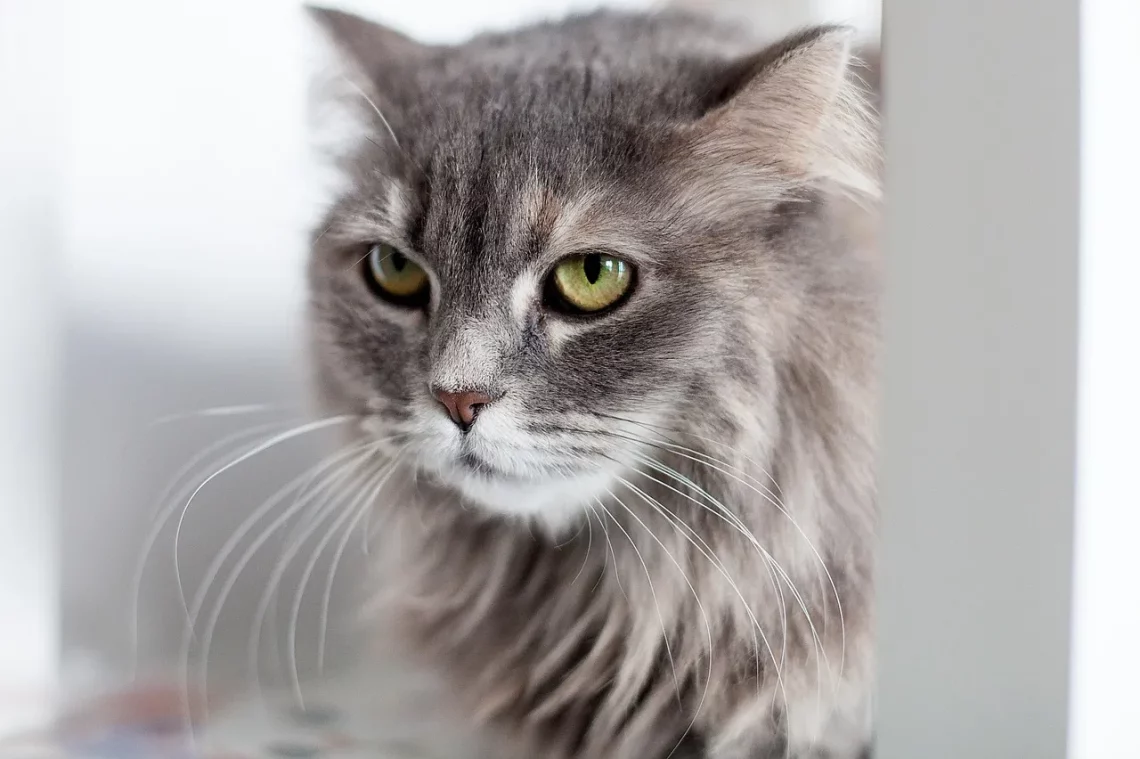
A Cat Is Fine Too: Embracing Feline Companionship in Our Lives
Feline companionship has a unique charm that captivates many hearts. Cats, with their graceful movements, independent nature, and playful antics, have earned their place as beloved pets in households around the world. Unlike dogs, which often require more hands-on attention and training, cats offer a more laid-back companionship that suits a variety of lifestyles. Their purring presence can be soothing, providing comfort during stressful times or simply enriching the ambiance of a home.
Moreover, the mystical allure of cats extends beyond their physical presence. Historically, these creatures have been associated with various cultures and myths, symbolizing everything from good luck to mystery. The bond between humans and cats is ancient, with evidence of domestication tracing back thousands of years. Today, as many people face the challenges of modern living, the appeal of having a cat as a companion is more relevant than ever.
In our fast-paced world, where stress and anxiety are common, the calming presence of a feline friend can be incredibly beneficial. As we explore the joys and advantages of sharing our lives with cats, we’ll discover how these creatures fit seamlessly into our homes, providing companionship, joy, and even health benefits.
The Benefits of Cat Companionship
Cats offer a plethora of benefits that can significantly enhance the quality of life for their owners. One of the most notable advantages is emotional support. The act of petting a cat can release endorphins, leading to a reduction in stress and anxiety. This simple interaction can create a sense of calm and relaxation, making cats wonderful companions for those who may feel overwhelmed by the demands of daily life.
Additionally, owning a cat can be a source of joy and entertainment. Cats are naturally playful creatures, often engaging in amusing antics that can lift spirits and bring laughter into a home. Their playful behavior, from chasing after toys to pouncing on imaginary prey, makes for a dynamic living environment and can encourage owners to engage in play, promoting a more active lifestyle.
Cats also require less maintenance than some other pets, such as dogs. They are generally more independent and can be left alone for longer periods, making them ideal for busy individuals or families. Their litter box training eliminates the need for daily walks, which can be a considerable time saver. This independence does not mean that cats do not require love and attention; rather, they can thrive in environments where their owners may not always be present.
Moreover, studies have shown that having a cat can lead to lower blood pressure and improved heart health. The presence of a cat can encourage relaxation, which is beneficial for cardiovascular health. The rhythmic sound of a cat’s purr is often associated with stress relief, contributing to a peaceful home atmosphere.
In summary, the companionship of a cat can provide emotional support, joy, and health benefits, making them an excellent choice for many individuals and families. Their unique characteristics and personality traits make them not just pets, but cherished members of the family.
Understanding Cat Behavior
Understanding the behavior of cats is essential for fostering a healthy and happy relationship. Cats communicate in subtle ways, and being attuned to their signals can enhance the bond between pet and owner. Unlike dogs, who are often very expressive in their emotions, cats may exhibit more understated cues.
For example, a cat’s purring is commonly associated with contentment, but it can also indicate discomfort or distress. Observing the context in which a cat purrs is crucial to understanding their feelings. Similarly, a cat’s body language can reveal a lot about their mood. A cat that is relaxed may have a loose posture, while one that feels threatened may arch its back, puff up its fur, or hiss.
Socialization is another critical aspect of cat behavior. While some cats are naturally more sociable and enjoy interacting with people and other pets, others may prefer solitude. It’s important to respect a cat’s individual personality and give them the space they need. Gradual introductions to new environments or companions can help reduce stress and encourage positive interactions.
Play is an essential component of a cat’s life. Engaging in play not only provides physical exercise but also stimulates a cat’s hunting instincts. Toys that mimic prey, such as feather wands or laser pointers, can keep a cat entertained and mentally engaged. Regular playtime can also strengthen the bond between a cat and its owner, creating enjoyable shared experiences.
Understanding dietary needs is equally important. Cats are obligate carnivores, meaning their diet should primarily consist of meat. Providing a balanced diet tailored to their age, activity level, and health needs is vital for maintaining their well-being. Consulting with a veterinarian can help owners make informed decisions regarding their feline friend’s nutrition.
In conclusion, understanding cat behavior is fundamental to nurturing a positive relationship. By recognizing their communication signals, respecting their individuality, and meeting their needs, owners can ensure their cats lead happy, fulfilling lives.
Creating a Cat-Friendly Environment
Creating a cat-friendly environment is essential for the well-being of your feline companion. Cats are creatures of habit and thrive in spaces that cater to their natural instincts. One of the first steps in establishing a cat-friendly home is ensuring there are safe spaces for your cat to retreat and explore. This can include cozy nooks, cat trees, and shelves that allow them to climb and observe their surroundings from a height.
Providing scratching posts is another crucial aspect. Cats need to scratch to keep their claws healthy and to mark their territory. Offering a variety of scratching surfaces, such as vertical posts and horizontal pads, can help satisfy this need and protect your furniture.
Moreover, it’s important to consider the placement of food and water dishes. Cats prefer to have their dining area in a quiet and low-traffic location. Clean, fresh water should always be available, and the dishes should be kept clean to encourage hydration.
Litter box maintenance is vital as well. A clean litter box is essential for a cat’s comfort and hygiene. The general rule is to have one litter box per cat, plus one extra, and to clean them regularly. Using unscented, clumping litter can help keep the area tidy and more appealing to your cat.
Incorporating enrichment activities into your cat’s environment can also promote mental stimulation. Interactive toys, puzzle feeders, and even simple DIY projects can keep a cat engaged and prevent boredom. Additionally, regular rotation of toys can maintain their novelty and interest.
Finally, ensuring your home is safe for your cat is paramount. Household plants can be toxic to cats, so it’s essential to research and remove any dangerous varieties. Securing windows and balconies can also prevent accidents, allowing your cat to enjoy fresh air without risk.
By creating a cat-friendly environment, you can enhance your cat’s quality of life, promoting happiness and health. A well-designed space allows cats to express their natural behaviors, leading to a more content and well-adjusted pet.
Health Considerations for Cats
Caring for a cat involves not only providing companionship but also ensuring their health and well-being. Regular veterinary check-ups are essential for monitoring a cat’s health, receiving vaccinations, and addressing any potential issues early on. Cats are often skilled at hiding their discomfort, making routine visits to the vet even more critical for preventive care.
Diet plays a significant role in a cat’s overall health. It’s important to provide a balanced diet that meets their nutritional needs. High-quality commercial cat food is formulated to provide the necessary nutrients, but it is also essential to monitor portion sizes to prevent obesity. Obesity in cats can lead to various health problems, including diabetes and joint issues.
Dental health is another crucial aspect of cat care. Many cat owners may not realize that oral hygiene is vital for their pets. Tartar buildup can lead to periodontal disease, which can cause pain and infection. Regular dental check-ups and providing dental treats or toys can help maintain oral health.
Additionally, keeping a cat mentally stimulated is important for preventing behavioral issues. Boredom can lead to destructive behavior, so providing toys and engaging playtime can help keep a cat happy and healthy.
Finally, spaying or neutering your cat is a responsible decision that can prevent numerous health issues and unwanted behaviors. This procedure can reduce the risk of certain cancers and eliminate the risk of unwanted litters.
In summary, prioritizing your cat’s health through regular veterinary care, a balanced diet, proper dental hygiene, and mental stimulation is crucial for ensuring a long and happy life. By being attentive to their health needs, you can cultivate a fulfilling and loving bond with your feline companion.
While this article provides general information on cat care, it is not intended as medical advice. For any health-related concerns about your cat, please consult a veterinarian.




